Do you need a Kegel trainer?
There’s no question that childbirth changes you in myriad ways. But there are certain aspects of post-childbirth life that you don’t have to simply accept as status quo, like a weakened pelvic floor that means you now pee a little every time you laugh or jump. We promise: This doesn’t have to be your fate just because you had a baby or three. In fact, urinary incontinence, even a mild case, is a sign that you might have a pelvic floor issue that needs to be addressed.
In fact, pelvic floor health is an often overlooked need in the postpartum period—and while a consultation with a pelvic floor physical therapist is common in other countries, it’s not a standard part of the postpartum checkup in the U.S. Instead, many women are left on their own—which is where pelvic floor trainers (aka Kegel trainers) come into focus. These tools are designed to help restore pelvic floor strength, and can make those endless Kegels both more feasible and more functional. But are Kegel trainers right for you? It depends, our experts say. Here’s what to know.
What is a Kegel trainer?
First, the basics: The pelvic floor is a network of muscles and connective tissues that form a bowl at the base of your pelvis, says Origin Physical Therapist and Clinical Learning and Development Lead, Ashley Rawlins, PT, DPT. Essentially, a pelvic floor trainer is a device that you insert in your vaginal canal to help you target and work those pelvic floor muscles through strengthening exercises, the most common of which is known as a Kegel, or a pelvic floor contraction (PFC). These devices give your muscles something to contract against so that you can better feel the contraction/expansion process.
Do you need one?
“Everyone benefits from having a clear knowledge of their pelvic floor muscles,” shares Rachel Nicks, doula & pelvic floor expert, and member of The Pulse, The Honey Pot Company’s panel of expert advisors made up of humans with vaginas who serve as a resource for your body and wellness journey.
But not everyone will benefit from using a Kegel trainer device—Nicks adds that it is possible to overtrain your pelvic floor muscles.
That’s why it’s important to know how to properly engage your pelvic floor muscles—and how to correctly use any device you choose—to prevent injury or worsening of symptoms. Reaching out to a pelvic floor physical therapist is a smart first step. They can help you determine whether you’d benefit from the extra support a Kegel trainer can offer.
But generally speaking, if you’re dealing with some laxity, especially postpartum, a Kegel trainer may help restore strength. “Those who would benefit the most from Kegel trainers are people with weak and underactive pelvic floor muscles and could benefit from exercises to improve the strength, speed, coordination and thickness of their pelvic floor muscles,” says Dr. Rawlins.
What are the benefits of using a pelvic floor trainer?
The proper use of a Kegel trainer could help with the following conditions, Dr. Rawlins shares, (although there are certainly exceptions, she notes):
Stress urinary incontinence (bladder leakage with coughing, laughing, sneezing, laughing, jumping, etc)
Anal leakage (difficulties controlling the leakage of gas or stool)
Weak, delayed or absent orgasm
Decreased sensation during sex
Pelvic heaviness or a feeling of organs falling out, commonly related to pelvic organ prolapse
They also offer motivation. “Let’s be honest: Kegels aren’t the most exciting exercise and it can be difficult to push yourself sometimes,” comments Dr. Rawlins. Bored of trying to squeeze in Kegels at stoplights or in the shower? A training device can offer motivation to help you stay consistent with your strengthening routine—and help ensure you’re doing a PFC the right way. Some devices are even equipped with a Bluetooth-linked app so that you can track and celebrate your progress and work up to more complex routines. (If you’re thinking it’s like a gym for your vagina, you’d be correct.)
If your access to pelvic floor physical therapy is limited, whether due to geographic constraints, cost or insurance restrictions, a pelvic floor trainer could help fill in the gaps if you suspect you need support. Though it’s always best to see an expert first, at least for an initial consultation, if you can.
What are the risks of using a pelvic floor trainer?
If you have a type of pelvic floor dysfunction with overactive, tight pelvic floor muscles, or pain with insertion or use, a Kegel device may end up causing more harm—leading to more pain. The devices come with some instruction on proper technique, but Dr. Rawlins says the tools aren’t and shouldn’t be a replacement for professional healthcare assessment or treatment. While the device education is generally strong, they aren’t error-proof, she notes. Using them comes with the risk of improper technique, which could further weaken your pelvic floor muscles.
It’s also worth noting that there isn’t much research to show that using these devices provides any additional benefit to regular pelvic physical therapy. But if therapy isn’t accessible or workable for you, or you need a bit of extra motivation, they could be useful.
3 types of Kegel trainers
Smart trainers
Smart trainers use biofeedback to provide real-time responses on the strength and coordination of your pelvic floor muscles. These devices usually consist of a sensor or probe that is inserted into the vagina. The sensor measures muscle activity and sends the information to a connected device, like your phone.
Weighted trainers
These small weights are inserted into the vagina—or the weight itself may hang from a silicone object that is inserted. Weighted trainers require you to contract your pelvic floor muscles to hold them in place.
External trainers
External trainers use resistance against which you can contract your pelvic floor muscles. They typically consist of a loop or band that is placed around or in between the thighs. By squeezing against the resistance, you engage and strengthen the pelvic floor muscles.
Our top 5 Kegel trainer picks
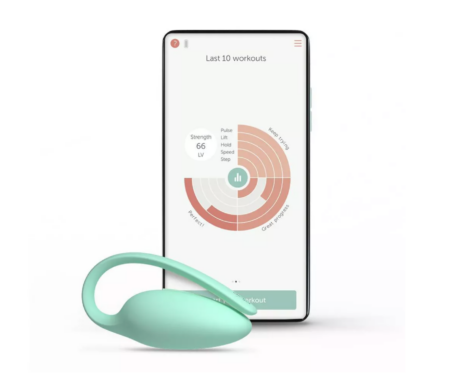
Elvie
• $199
1. Elvie Trainer
The Elvie Trainer is a biofeedback device that can give you tips on how to properly do a Kegel and help detect incorrect form. Made by the same company as one of our favorite wireless breast pumps, its streamlined design is super easy to use, and the gamified app makes training actually kind of fun.
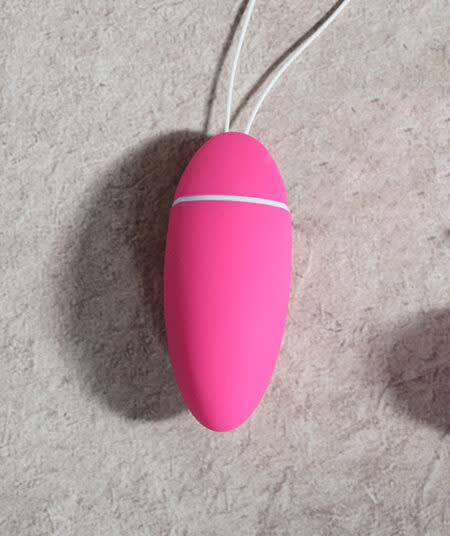
Intimina
• $99.95
2. KegelSmart
The Intimina KegelSmart device can detect your pelvic floor muscle strength and uses that info to come up with a custom routine based on your needs. The vibration exercises are designed to be performed for just 5 minutes a day, making it a fairly low-stress commitment.
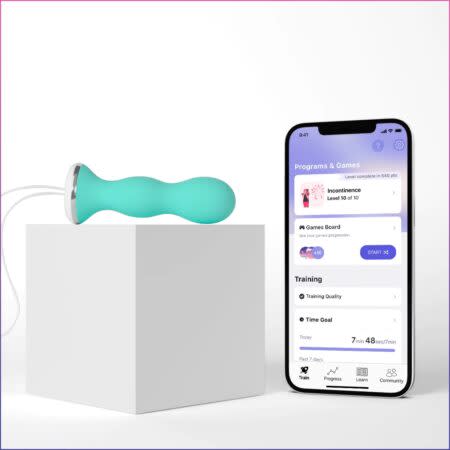
Perifit
• $139
3. Kegel Exerciser with App
Tired of the contract-and-release of it all? Play your way to pelvic floor strength with the Perifit Kegel Exerciser and game-based app, which lets you use your PFCs to conquer 12 different fun, motivating games. You’ll be able to play to your competitive side—and chart your progress along the way.
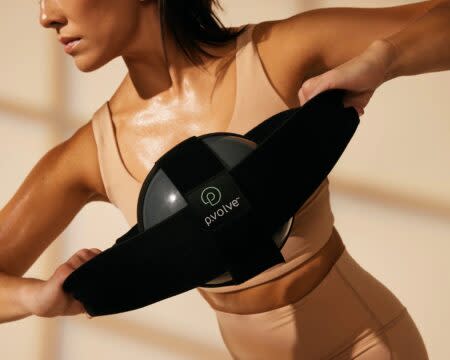
Pvolve
• $69.99
4. p.ball Core Trainer
The p.ball from Pvolve is designed to be worn between the upper thighs, right up to the pubic bone, creating an instant awareness of the pelvic floor. As you move through small exercises that continuously engage everything from your abdominals to your lower body, you can begin to rebuild that connection and strength. P.volve offers both streaming and on demand classes, including pre and postnatal classes that use the p.ball. And of course you can use it any time on your own!
-Sara Goldstein, senior commerce editor
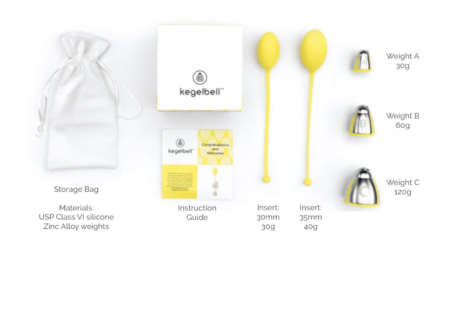
Kegelbell
• $99.95
5. The Vagina Gym Original Kit
This set of Kegel weights uses your body’s own feedback to help you detect and train your pelvic floor muscles. Attach an external weight to one of the two silicone inserts, and use it to strengthen your PFCs. Just like with weights at the gym, you can reduce or add weight to your Kegelbell as needed—if it’s too heavy, it’ll just slip out.
